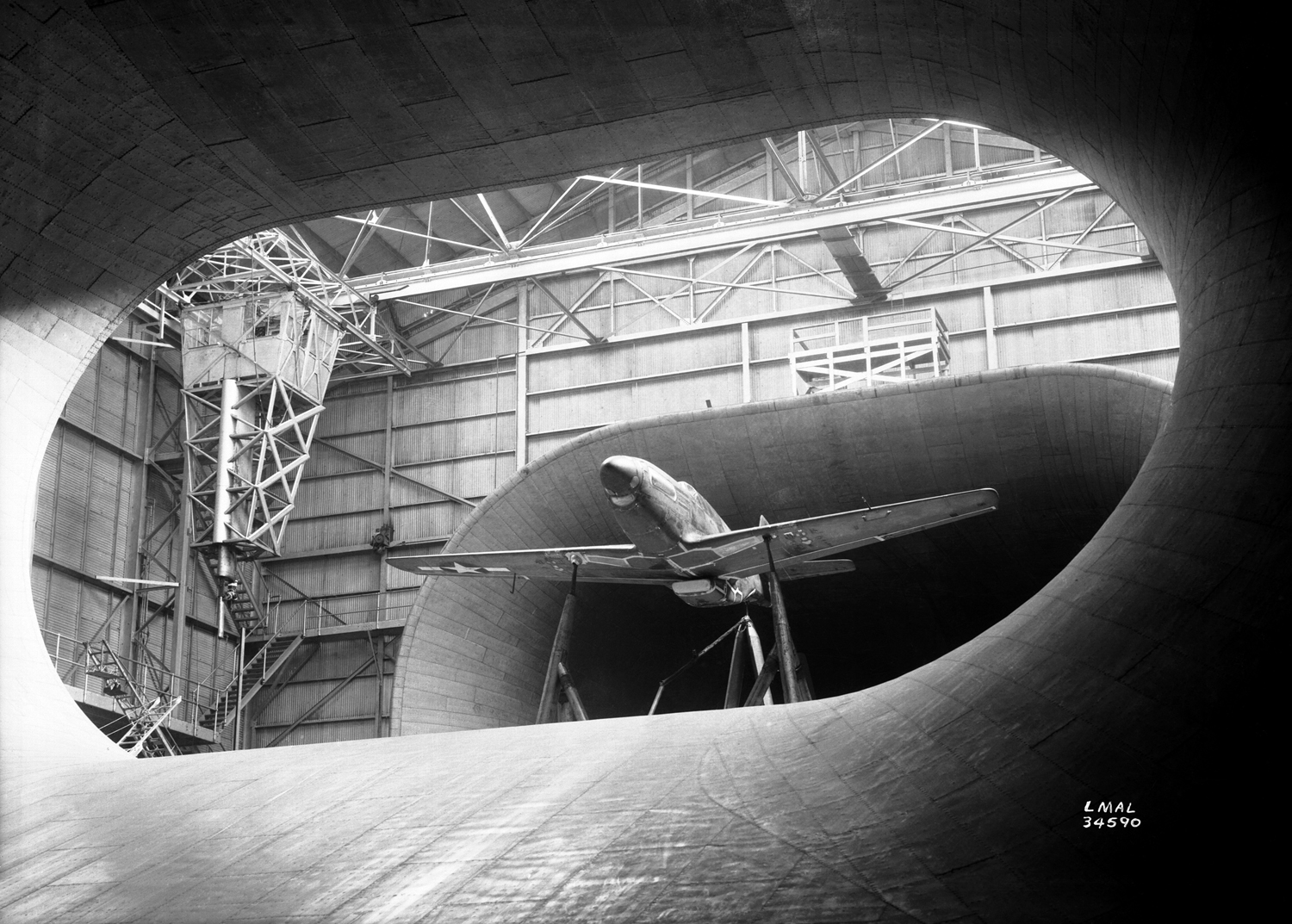
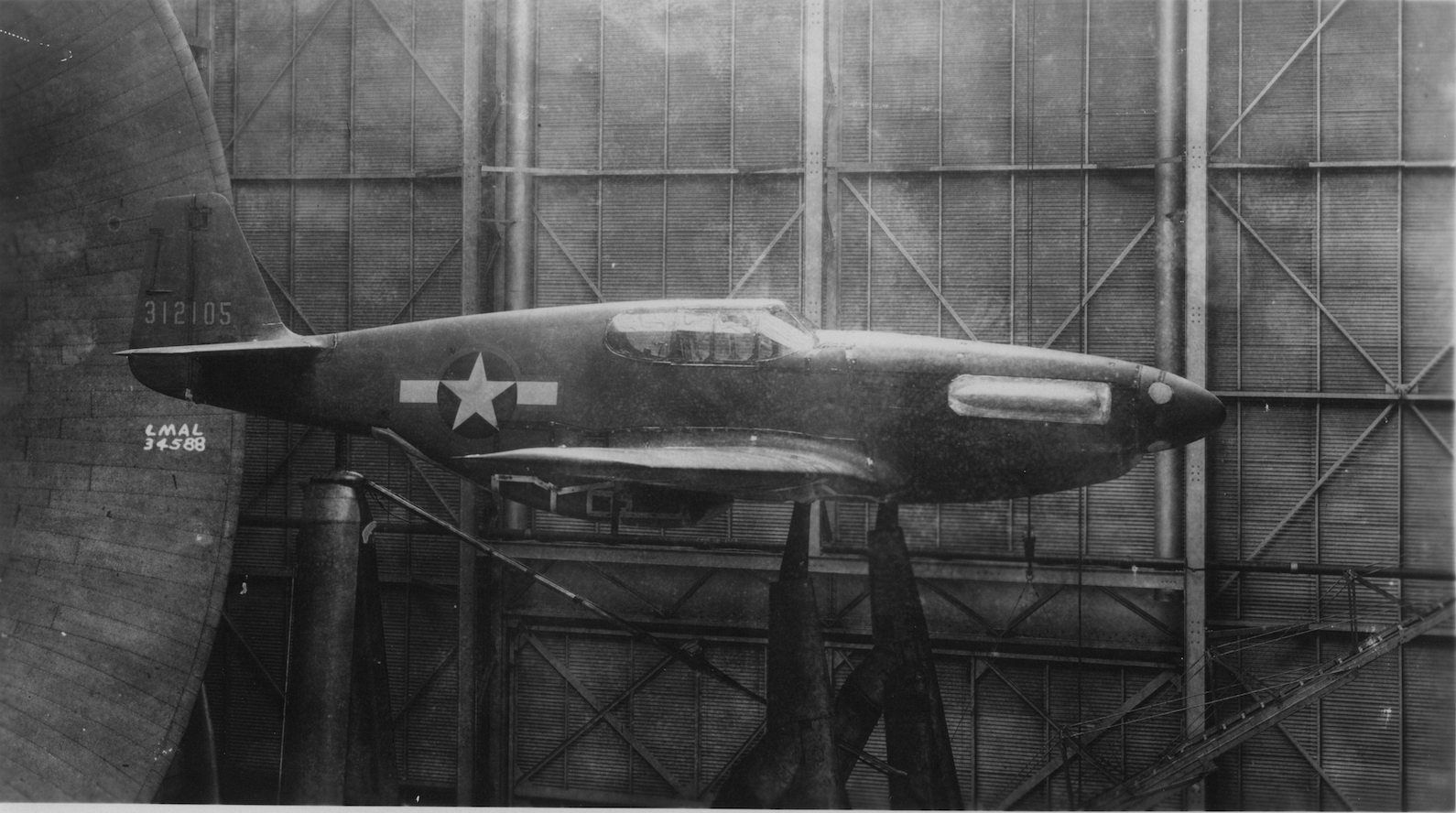
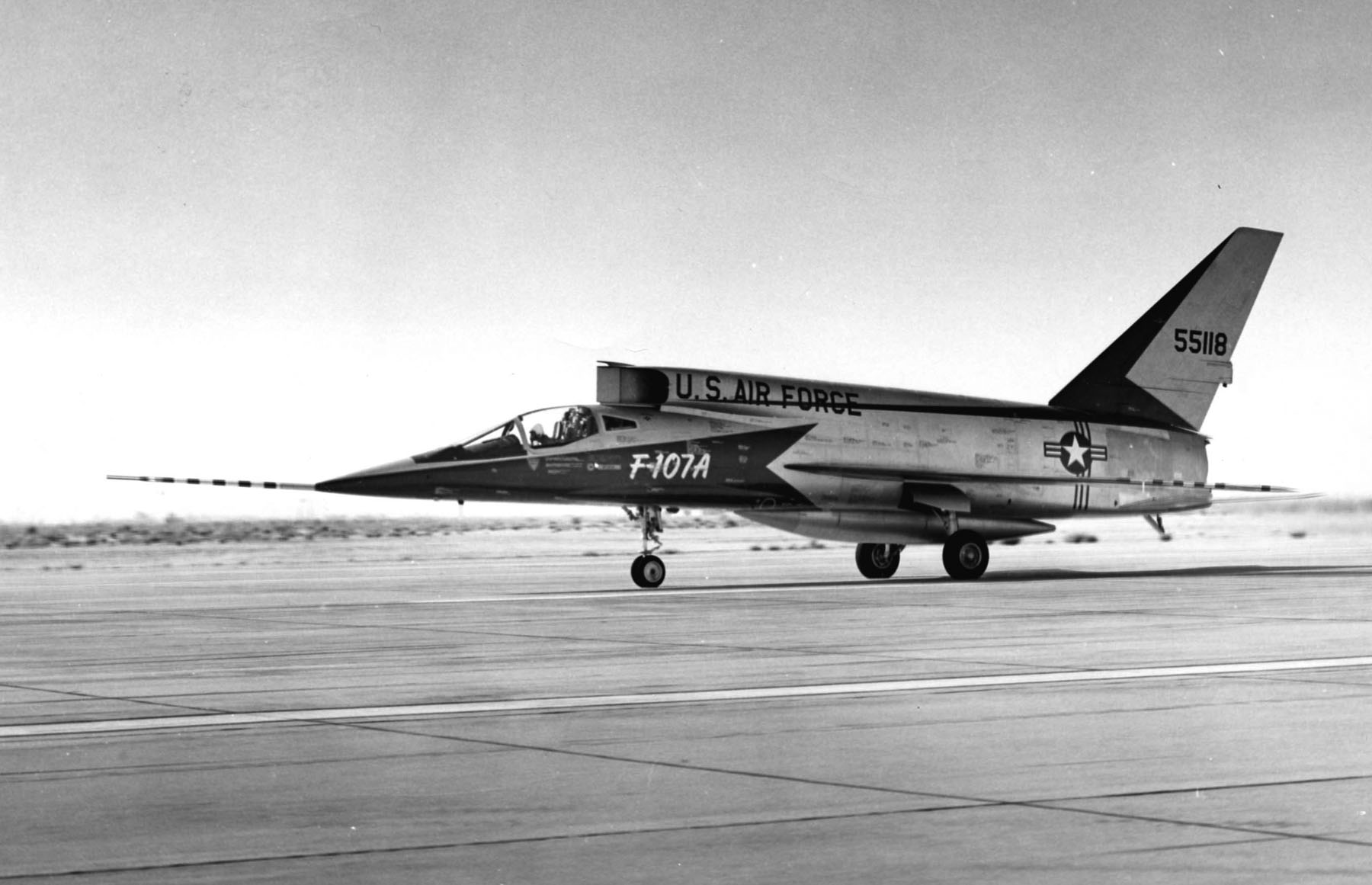
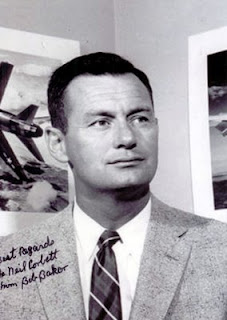
10 September 1956: North American Aviation test pilot Joel Robert (“Bob”) Baker made the first flight of the F-107A-NA 55-5118, a pre-production tactical fighter bomber, reaching a speed of Mach 1.03. On landing the drogue parachute did not deploy and due to the high speed on rollout, the nose gear strut collapsed, causing minor damage to the new aircraft.
The F-107A was designed as a Mach 2+ fighter bomber capable of carrying nuclear weapons. The plan to carry a Mark 7 bomb in a centerline recess in the aircraft’s belly resulted in the radical appearance of the airplane, with the engine intake mounted above and behind the cockpit.
Based on the F-100 Super Sabre, it was originally designated F-100B, but this was changed to F-107A prior to the first flight.
The North American Aviation F-107A was a single-seat, single-engine supersonic fighter bomber. It was equipped with a very sophisticated stability augmentation system. The F-107A was 61 feet, 10 inches (18.847 meters) long with a wingspan of 36 feet, 7 inches (11.151 meters) and height of 19 feet, 8 inches (5.994 meters). Its empty weight was 22,696 pounds (10.295 kilograms) and had a maximum takeoff weight of 41,537 pounds (18,841 kilograms).
The airplane was powered by a Pratt & Whitney YJ75-P-11 afterburning turbojet which produced a maximum 24,500 pounds of thrust (108.98 kilonewtons).
This gave the F-107A a maximum speed of 890 miles per hour (1,432 kilometers per hour) at Sea Level, and 1,295 miles per hour (2,084 kilometers per hour) at 36,000 feet (10,973 meters). It could climb at an initial rate of 39,900 feet per minute (202.7 meters per second) and had a service ceiling of 53,200 feet (16,215 meters).
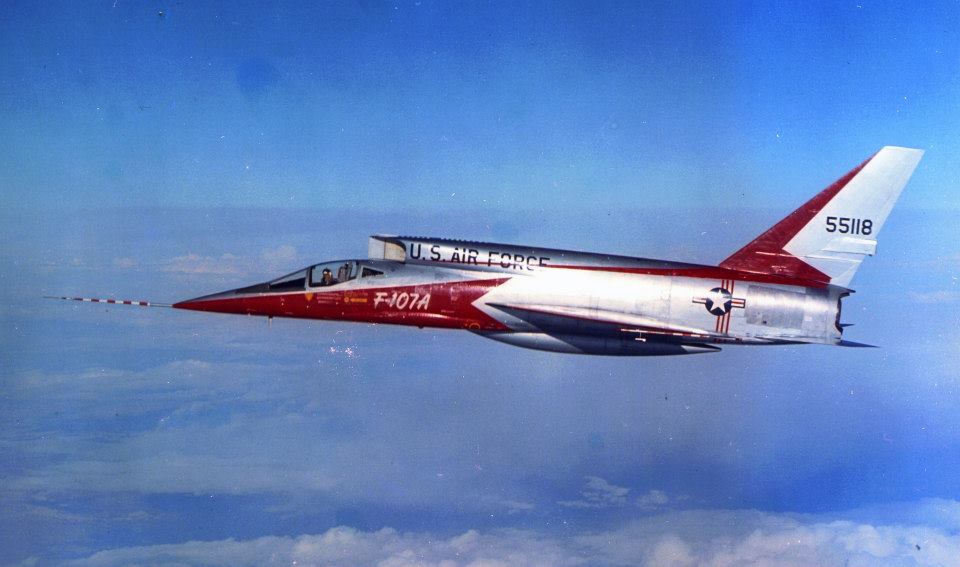
The Mark 7 was a variable-yield fission bomb that could be pre-set to detonate with ranges between 8 and 61 kilotons. It weighed approximately 1,700 pounds (771 kilograms).
The second F-107A, 55-5119, was the weapons test aircraft and was armed with four 20mm M39 cannon with 200 rounds per gun.
The F-107A was in competition with Republic’s F-105 Thunderchief, which was selected by the Air Force for production. Only three F-107A test aircraft were built.
After Air Force testing, two F-107s, 55-5118 and 55-5120, were turned over to the NACA High-Speed Flight Station for use as research aircraft. John Barron (“Jack”) McKay was assigned as the project pilot. 55-5118 made only 4 flights for NACA before being grounded. 55-5120 made 42 flights.
Today, 55-5118 is at the Pima Air and Space Museum, Tucson, Arizona. Its sister ship, 55-5119, is at the National Museum of the United States Air Force, Wright-Patterson AFB, Ohio. The third airplane, 55-5120, was damaged on takeoff with test pilot Scott Crossfield in the cockpit, 1 September 1959. It was not repaired.

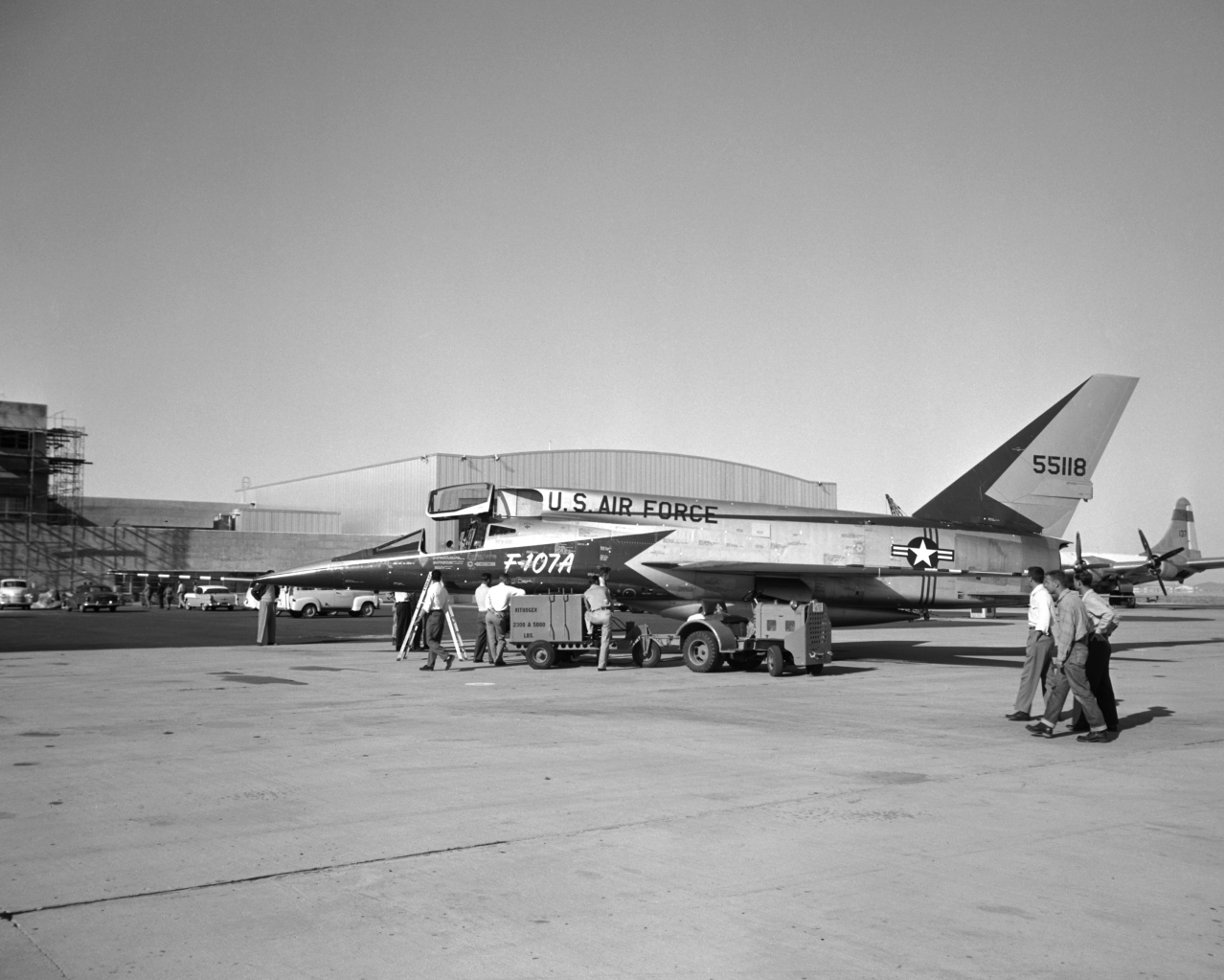
© 2015, Bryan R. Swopes
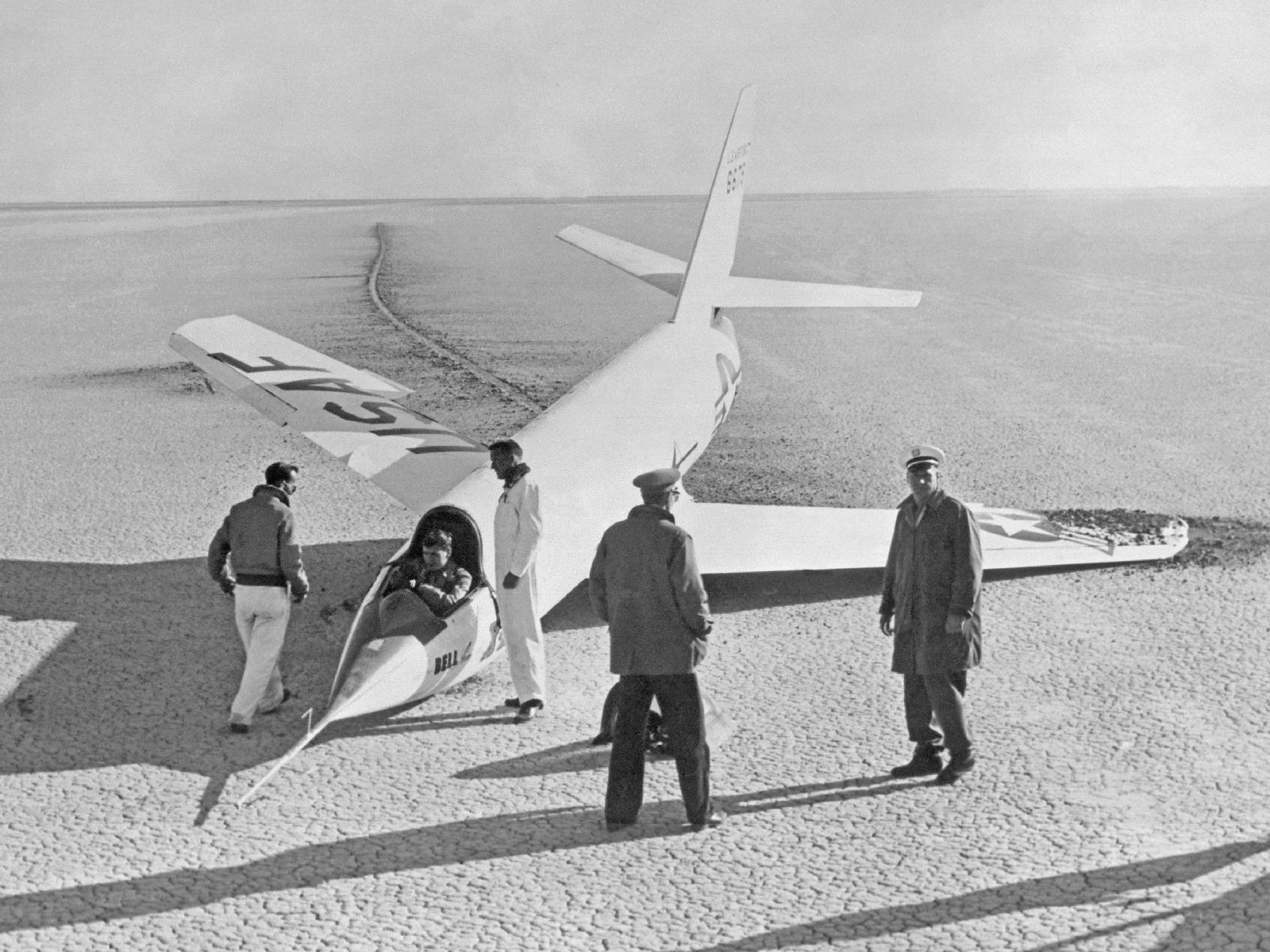
27 June 1952: The Bell X-2 research rocketplane, with company test pilot Jean Leroy (“Skip”) Ziegler at the controls, was airdropped from a “mothership,” a Boeing B-50A-5-BO Superfortress, 46-011, over Edwards Air Force Base, California. This was the first flight of the X-2 Program, and was an unpowered glide flight for pilot familiarization.
On touch down, the nose wheel collapsed and the aircraft slid across the dry lake bed, but was not seriously damaged.
Two X-2 rocketplanes, serial numbers 46-674 and 46-675, were built by the Bell Aircraft Corporation, which has also built the X-1 series. The second X-2 was the first one to fly.
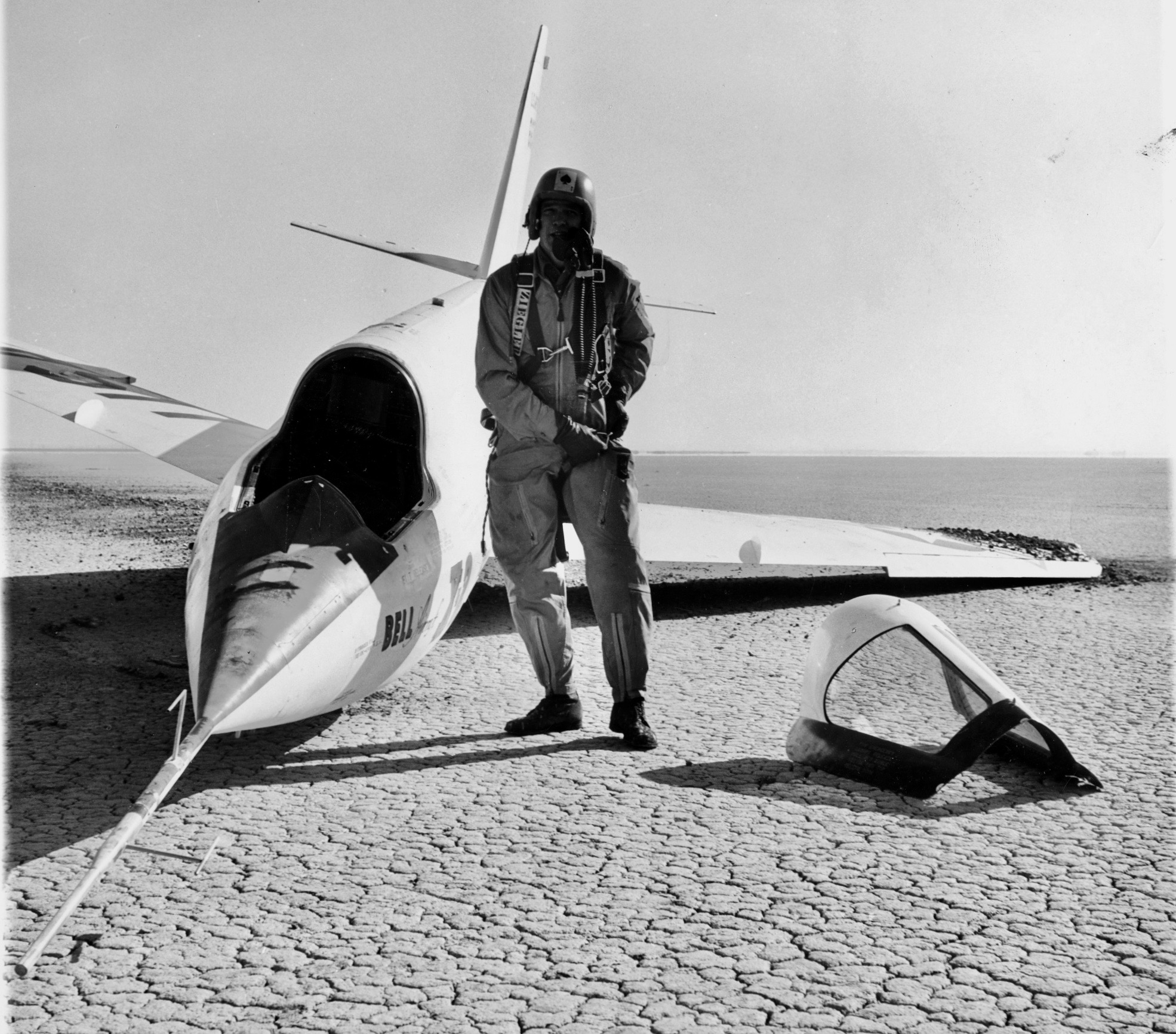
The X-2 was a joint project of the U.S. Air Force and NACA (the National Advisory Committee for Aeronautics, the predecessor of NASA). The rocketplane was designed and built by Bell Aircraft Corporation of Buffalo, New York, to explore supersonic flight at speeds beyond the capabilities of the earlier Bell X-1 and Douglas D-558-2 Skyrocket. In addition to the aerodynamic effects of speeds in the Mach 2.0–Mach 3.0 range, engineers knew that the high temperatures created by aerodynamic friction would be a problem, so the aircraft was built from Stainless Steel and K-Monel, a copper-nickel alloy.
 The Bell Aircraft Corporation X-2 was 37 feet, 10 inches (11.532 meters) long with a wingspan of 32 feet, 3 inches (9.830 meters) and height of 11 feet, 10 inches (3.607 meters). Its empty weight was 12,375 pounds (5,613 kilograms) and loaded weight was 24,910 pounds (11,299 kilograms).
The Bell Aircraft Corporation X-2 was 37 feet, 10 inches (11.532 meters) long with a wingspan of 32 feet, 3 inches (9.830 meters) and height of 11 feet, 10 inches (3.607 meters). Its empty weight was 12,375 pounds (5,613 kilograms) and loaded weight was 24,910 pounds (11,299 kilograms).

 The X-2 was powered by a throttleable Curtiss-Wright XLR25-CW-1 rocket engine that produced 2,500–15,000 pounds of thrust burning alcohol and liquid oxygen. Rather than use its limited fuel capacity to take off and climb to altitude, the X-2 was dropped from a modified heavy bomber as had been the earlier rocketplanes. The launch altitude was 30,000 feet (9,144 meters). After the fuel was exhausted, the X-2 glided to a touchdown on Rogers Dry Lake at Edwards Air Force Base.
The X-2 was powered by a throttleable Curtiss-Wright XLR25-CW-1 rocket engine that produced 2,500–15,000 pounds of thrust burning alcohol and liquid oxygen. Rather than use its limited fuel capacity to take off and climb to altitude, the X-2 was dropped from a modified heavy bomber as had been the earlier rocketplanes. The launch altitude was 30,000 feet (9,144 meters). After the fuel was exhausted, the X-2 glided to a touchdown on Rogers Dry Lake at Edwards Air Force Base.
A four-engine Boeing B-50A Superfortress bomber, serial number 46-011, was modified as the ”mothership.” A second Superfortress, B-50D-95-BO 48-096, was also modified to carry the X-2, and was redesignated EB-50D. During the flight test program, the X-2 reached a maximum speed of Mach 3.196 (2,094 miles per hour, 3,370 kilometers per hour) and a maximum altitude of 126,200 feet (38,466 meters).
On 12 May 1953, less than one year after the first glide flight, Skip Ziegler was in the cockpit of 46-675 while it was being carried on a captive test flight aboard the B-50A Superfortress. An internal explosion destroyed the X-2 and killed Ziegler and another crewman aboard the mothership. The rocketplane fell into Lake Ontario and neither it nor Ziegler’s body were ever recovered. The Superfortress was able to land, but was so badly damaged that it never flew again.
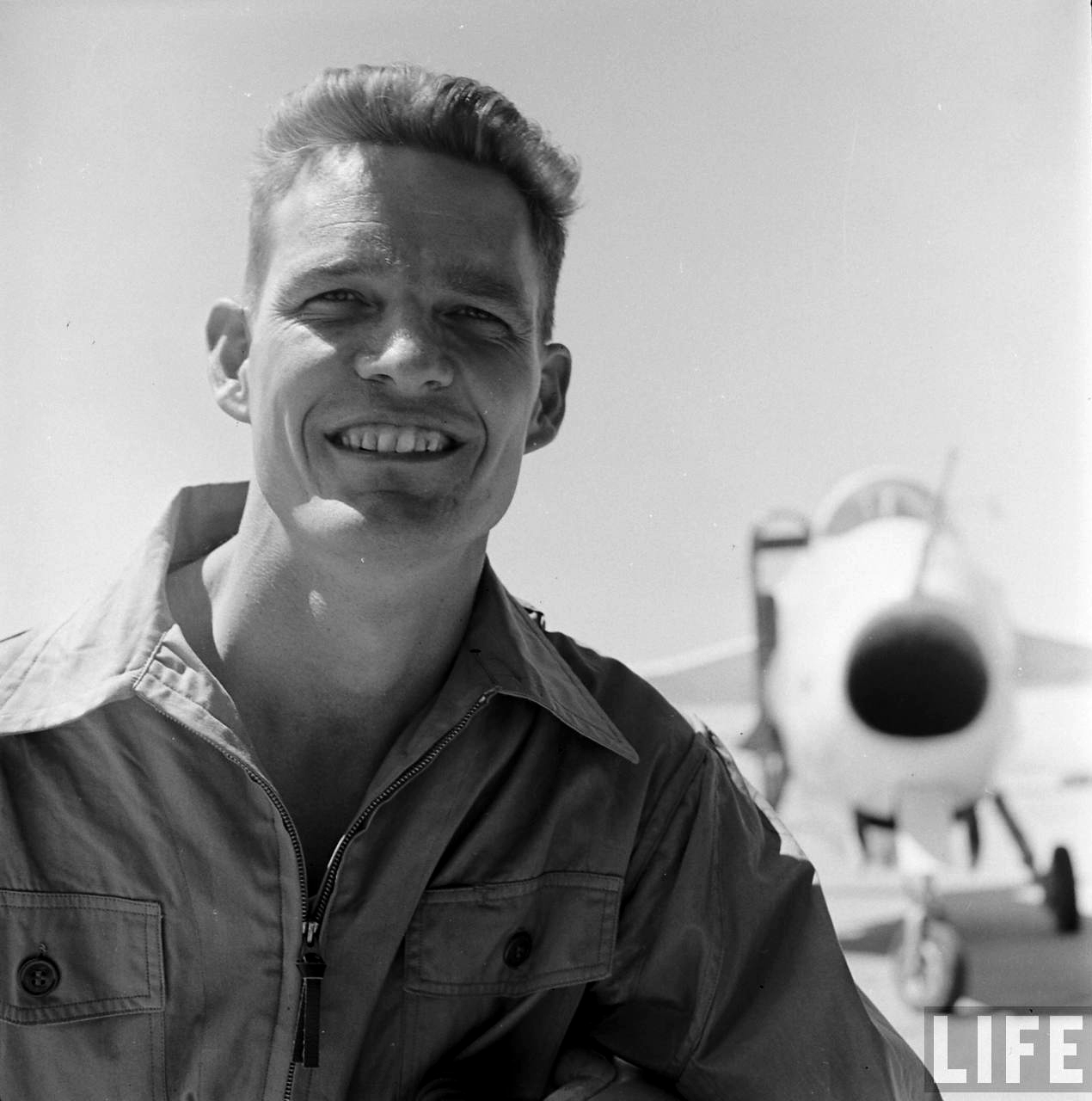
© 2018, Bryan R. Swopes
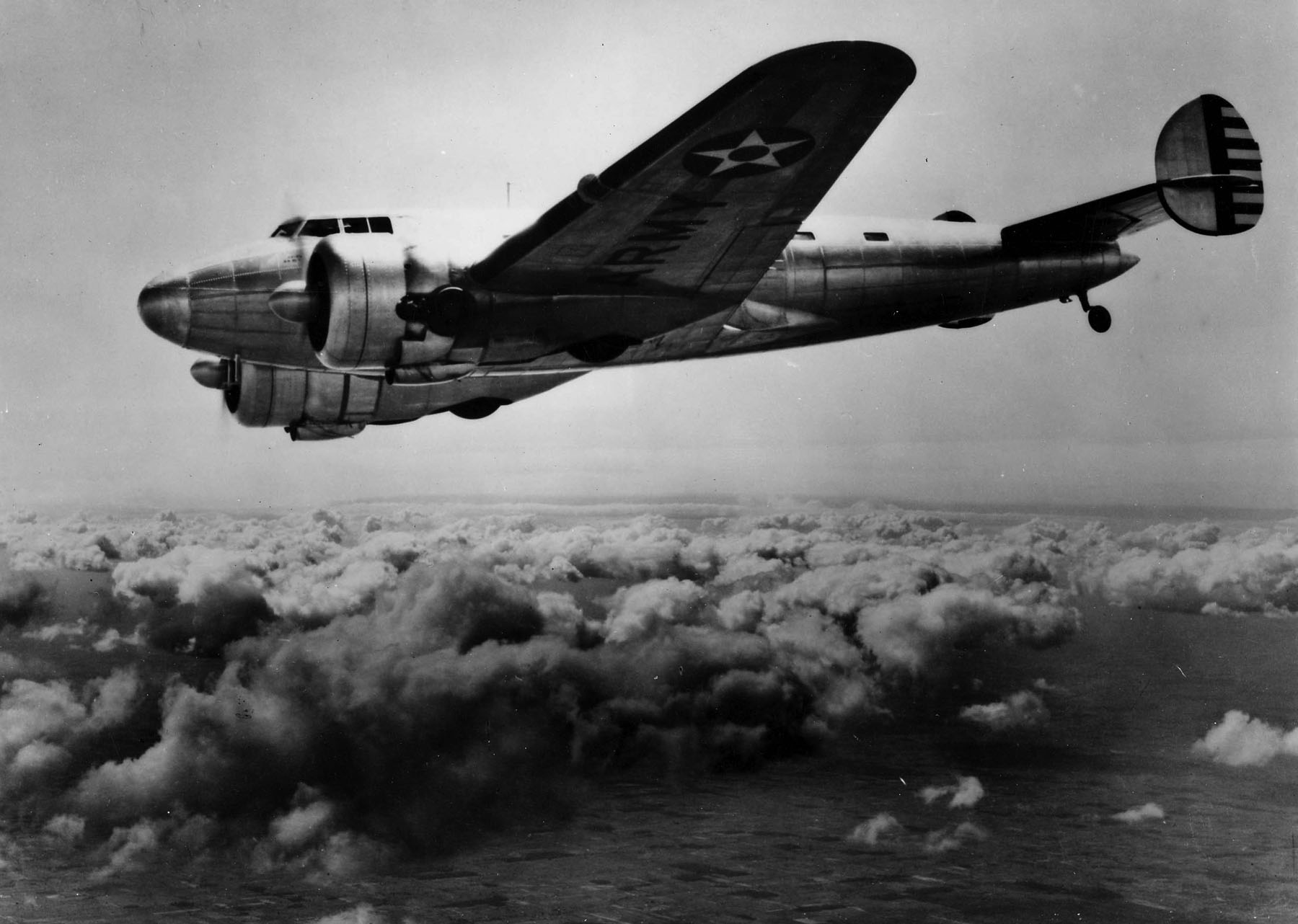
7 May 1937: First flight of the Lockheed XC-35, Air Corps serial number 36-353. Ordered by the Air Corps in 1936 as a high-altitude research aircraft, and for the development of cabin pressurization, the XC-35 Supercharged Cabin Transport Airplane was a highly modified Lockheed Electra 10A. It was the first airplane to be specifically built with a pressurized cabin.
The Army Air Corps was awarded the Collier Trophy for 1937 for the XC-35 project.
With a strengthened circular fuselage and smaller windows, the XC-35′s passenger compartment was pressurized by engine turbo-superchargers and controlled by a flight engineer. Cabin pressure could be maintained at the equivalent of 12,000 feet (3,658 meters) above sea level, at an actual altitude of 30,000 feet (9,144 meters).
A crew of three and two passengers were accommodated within the pressurized section, and there was room for another passenger to the rear of the pressure bulkhead, which could only be used at lower altitudes.
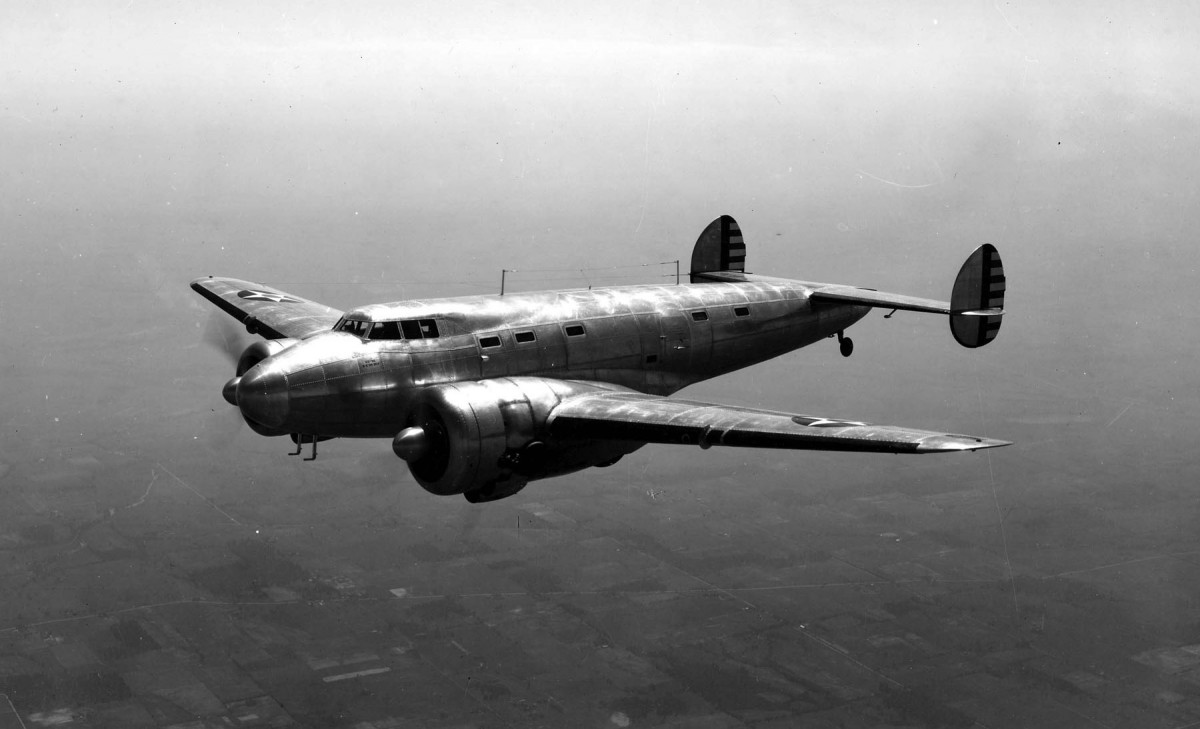
The Lockheed XC-35 was powered by two air-cooled, supercharged, 1,343.804-cubic-inch-displacement (22.021 liter) Pratt & Whitney R-1340-43 (Wasp T5H1) single-row, nine-cylinder radial engines with a compression ratio of 6:1. The R-1340-43 had a Normal and Takeoff Power rating of 550 horsepower at 2,200 r.p.m. from Sea Level to 3,000 feet (914 meters), burning 92-octane gasoline. It was direct drive. The engine was 3 feet, 6.25 inches (1.073 meters) long, 4 feet, 3.50 inches (1.308 meters) in diameter, and weighed 864 pounds (392 kilograms).
Able to fly above 30,000 feet (9,144 meters), the XC-35 was later used by NACA for thunderstorm penetration research flights. In 1948 it was transferred to the Smithsonian Institution.
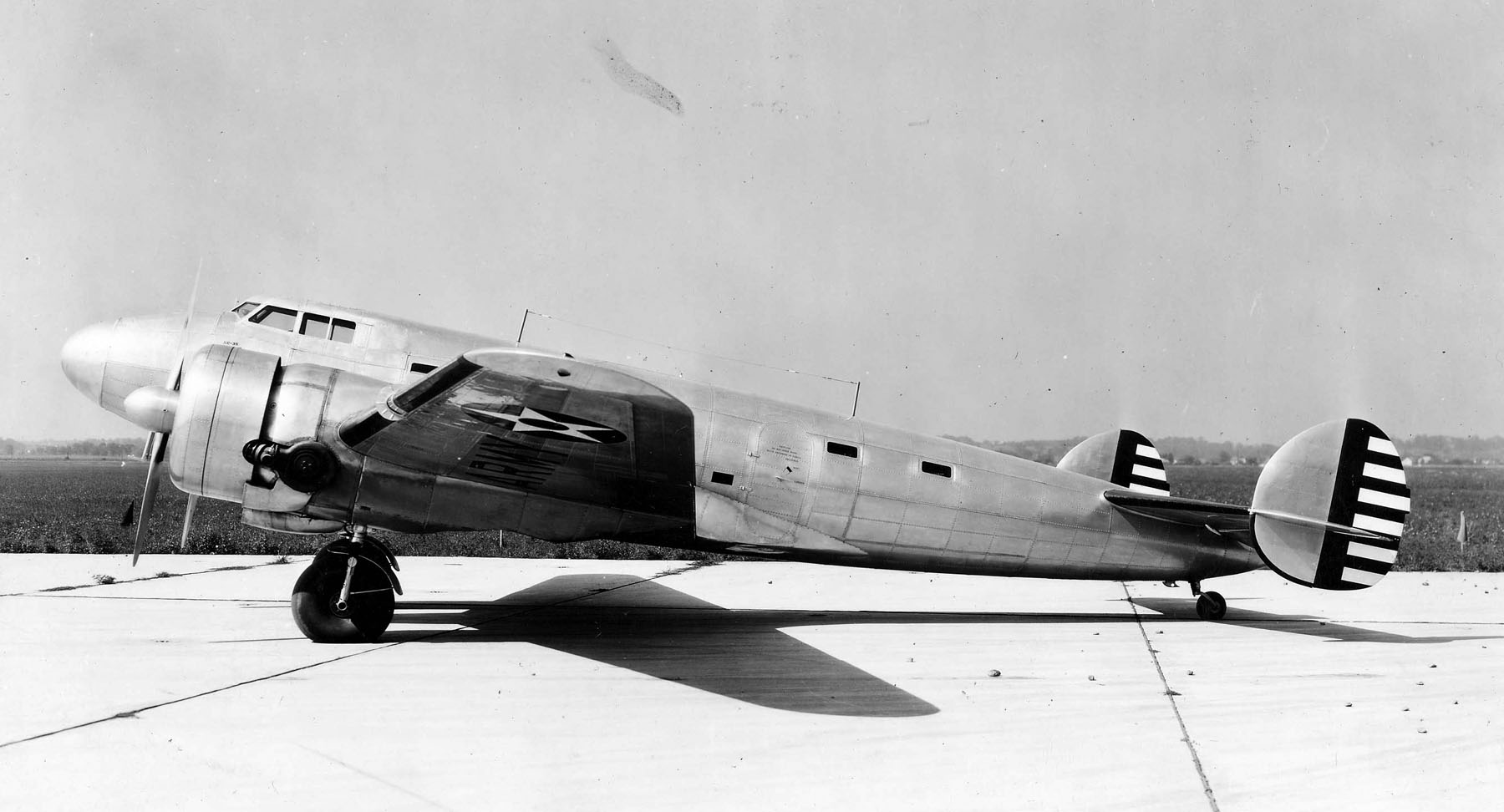
© 2017, Bryan R. Swopes